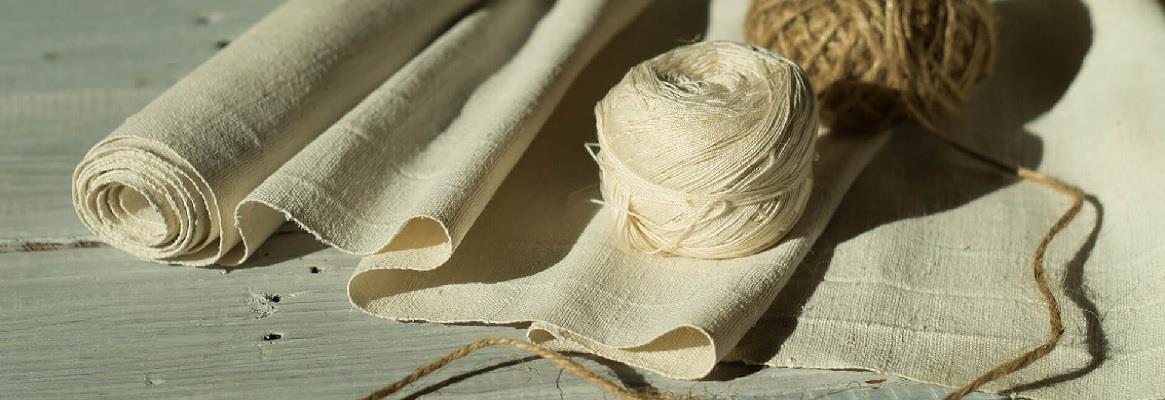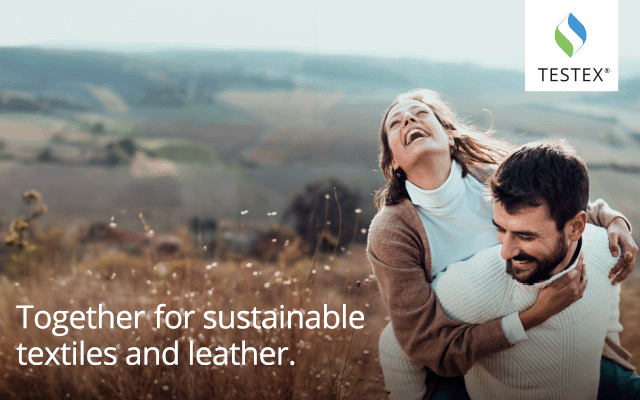Hemp fabric is a sustainable textile made of fibres of a very high-yielding crop in the cannabis sativa plant family. Historically used for industrial purposes, like rope and sails, hemp is known as one of the most versatile and durable natural fibres.
Growing and processing of hemp fibre does not involve use of pesticides and other chemicals. This makes hemp fibre a natural and environmentally friendly product. Its main properties are:
• Sustainable and environmentally friendly fibre.
• One of the strongest and most durable natural textile fibres.
• Absorbs moisture, prevents bacteria formation.
• Blocks ultraviolet rays.
• Superior durability
• Easily recyclable

Natural Fiber Group OÜ manufactures hemp fibre, which is marketed in India by Ahmedabad-based Spinning King (India) Limited. The plant of Natural Fiber (UAB “Natū ralus pluos︣tas”) is located in Lithuania, Europe—a geographical area which offers excellent conditions for growing and retting hemp.
The company is the only manufacturer of hemp fibre in the Baltics and guarantees the full cultivation and processing cycle of hemp fibre for high quality textiles. Hemp grown on the Lithuanian farms is processed to obtain hemp fibre.
• R&D centre since 2014
• Harvesting before maturity of seeds
• Dew retting in fields
• We focus on maximum fibre content Processing capacity - 30,000 tons of hemp per year.


Fibres’ Variety:
Natural Fiber offers below variety in 100% hemp fibre of spinning grade:
1. Decorticated hemp fibre
2. Mechanically cottonised hemp fibre
3. Boiled and mechanically cottonised hemp fibre
4. Boiled, bleached and mechanically cottonised hemp fibre
1. Decorticated hemp fibre:

This variety of hemp fibre is suitable for
• the production of nonwovens
• further cottonisation.
2. Mechanically cottonised hemp fibre:

This variety of hemp fibre is suitable for
Spinning in blends with cotton, wool and synthetic or semi-synthetic fibres.
o Thicker (low number) yarns are dedicated to producing heavier natural or semi-natural fabrics.
o The yarn is used to make home textile fabrics, tapestries.
3. Boiled and mechanically cottonised hemp fibre:

This variety of hemp fibre is suitable for
Spinning in blends with cotton, wool and synthetic or semi-synthetic fibres.
o Medium-thickness yarns are dedicated to producing medium-heavy natural or semi-natural fabrics.
o The yarn is used for medium-heavy apparel fabrics, denim fabric.
4. Boiled, bleached and mechanically cottonised hemp fibre:

This variety of hemp fibre is suitable for
Spinning in blends with cotton, wool, synthetic and semi-synthetic fibres.
o Thin (high number) yarns are dedicated to lightweight fabrics.
o The yarn is used for lightweight apparel fabrics, knitwear.
Hemp has 8x the tensile strength of other natural fibres making it the perfect choice for everyday use. Hemp fabric on its own has a tendency to be rough to the touch, so Natural Fiber has designed hemp denim fabric with a blend of hemp and certified organic cotton. Result—"You get the durability of hemp with the soft feel of cotton you’d expect from your kitchen towels and linens."
It’s important when buying sustainable fabrics to make sure the dyes and water used are managed properly to minimise the environmental impact. All textiles of Natural Fiber are made with EU approved dyes and controlled water management.
Why hemp fabric?
• All-natural fibre
• Sustainable and renewable
• Absorbent
• Naturally pest-resistant
• Durable and long lasting
Application:
• Spinning yarns; blended yarns – upto Ne 40s
• Home textile products
• Apparel – menswear and womenswear
• Knitting applications
• Denim
Hemp Fabrics are more durable than cotton fabrics and linen fabrics too. Hemp and linen absorb moisture. Hemp’s moisture retention is a bit more (12%) than linen’s (10 – 12%) and cotton (8%).
The lifespan of hemp is the longest of all the natural fibres. In general, hemp fibre bundles are longer than those of flax. So, the first point of differentiation is this: the length of the fibres.
The colour of flax fibres is described as yellowish-buff to gray, and hemp as yellowish-gray to dark brown.
Hemp fibres vary from 4 to about 7 feet in length, while linen is general 1.5 to 3 feet in length. Hemp is highly resistant to rotting, mildew, mold and salt water. Hemp is also highly resistant to ultraviolet light, so it won’t fade or disintegrate in sunlight. Hemp’s elastic recovery is very poor and less than linen; it stretches less than any other natural fibre.













Comments